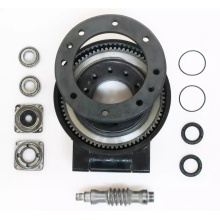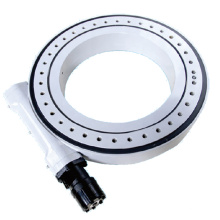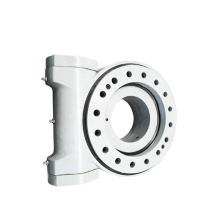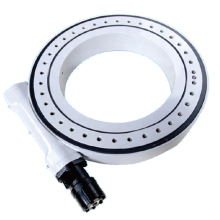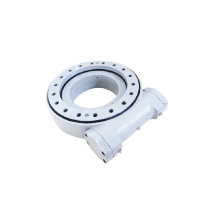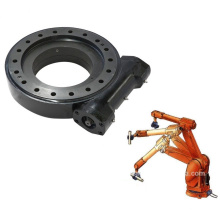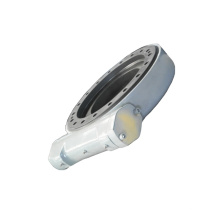Komatsu PC200-6 Excavator Generator Fault Handling
2021-05-09
The Yunnan Provincial Highway Bureau Staff and Workers University purchased the Taiwan Komatsu company's production and training in 1996. In the month of 999, the excavator had a malfunction of the generator rotor stuck to the drive belt. The demolition of the motor revealed that the rolling bearings that supported the rotor were damaged and replaced the same type of bearings. After the engine was installed, the generator still did not generate electricity.
The generator was dismantled and examined in detail. It was found that the structure of the alternator was basically similar to that of the domestic alternator. The unique feature was that an integrated circuit regulator with a small volume was installed on the heat sink of the generator to form an integral whole. . The advantages of this structural design are the high precision of the voltage adjustment, the durability of the shock-proof volume, and the simple wiring. At present, this type of structure has been widely used on a generator of a passenger car engine to test the generator on a test bench with universal use. The field winding of the stator winding of the silicon tube has no short-circuit breaking phenomenon and the resistance value is within the normal range. The rotor rotates. normal. The brush is working properly. It is diagnosed as damage to the integrated circuit regulator.
What causes the damage to the IC regulator? Because the alternator's output current and speed are higher than traditional DC generators, it generates much more transient energy than a DC generator. Semiconductor devices are very sensitive to transient voltages. When the transient voltage or overvoltage reaches a constant value, the semiconductor device is easily broken down and damaged.
In the excavator electrical system, transient voltage and overvoltage are generated mainly due to the following conditions. In view of the working conditions of the excavator, one method of removing the fault is to replace the generator because the Komatsu excavator parts seller has no off-the-shelf supply and quote Higher, in time. Economically it is not allowed; it is to replace the integrated circuit regulator. However, in the local auto and engineering machinery parts market there is no sales of regulators of the same type; external domestic electromagnetic regulators are used instead of integrated circuit regulators. According to the output characteristic 2 of the alternator, the alternator has the self-protection ability of limiting the current automatically, and no additional current limiter is needed. Only one voltage adjustment relay is required, and the relay type regulator has strong surge resistance. Voltage capability. From the theoretical analysis of this method is simple and feasible.
After performing paired tests on several domestic voltage regulators on an electrical test bench, the final decision was to use the 5021 voltage regulator, which is a single-stage voltage regulator with an arc extinguishing circuit and a temperature compensation device.
The most current rated current method is as follows: first cut off the connecting end of the integrated circuit regulator and the generator, and direct the output characteristics of the magnetic field direct 2 alternator to the magnetic field terminal of the generator, and then assemble the generator. After the alternator regulator is connected with a wire on the test bench, a pairing test is performed to measure the no-load full-load speed under the rated voltage of the generator, so as to judge whether the generator is working properly and whether the regulator meets the requirements. When the battery is charged, the lead connected to the battery is suddenly disconnected, or in the absence of the battery, the other load is abruptly disconnected. When the alternator is externally supplied, if the load is suddenly disconnected, the current in the stator winding suddenly decreases. Small, producing very small, large capacity, transient energy generated by disconnecting the load is absorbed by the battery, so does not produce a very high instantaneous spike voltage. However, if the generator is charging the battery and supplying other loads, the connection between the generator and the battery is suddenly interrupted, or when the load is abruptly disconnected without the battery, the generator armature induction coil will A very high transient overvoltage is generated, and there is a risk that the electronic components in the generator and the regulator will be broken down. This is confirmed by the external characteristics of the alternator. The larger the load that is thrown away, the higher the speed of the generator; the faster the disconnection speed, the greater the amplitude of the transient voltage generated and the longer the decay time, so the connection between the alternator and the battery must be reliable.
The sudden change of the magnetic field current causes the transient winding of the alternator. Since the power switch is turned to the off position and the battery is suddenly interrupted, an exponentially decaying negative pulse voltage is generated. The amplitude is as high as 50100 due to the large time constant of the excitation circuit. The decay time can reach up to 200 tubes and the electronic components in the regulator over a long period of time.
Electric equipment switching causes transients because the field construction site needs lighting at night, and excavators often work overtime at night. When the lighting is turned on and off, the generator load suddenly mutates to generate transient voltages, which can also cause pole tubes. And the electronic components in the regulator are damaged. Therefore, when using lighting fixtures, they should be opened and closed one by one.
18 Dangerous voltages are maintained, and the result of easy breakdown test results such as 1 speed current A voltage V speed current A voltage v test result shows that the generator and regulator work normally and can meet the daily power requirements of the excavator.
Finally, connect the generator and exterior regulator to the electrical system of the excavator according to the wiring method of 3, and install it. After starting the engine, the generator and electrical equipment are working properly. This clearly demonstrates that the method of replacing imported electronic devices with domestic devices has been successful.
1 Gu Yongqi, Zhao Ming. Automotive electrical and electronic equipment 1. Chongqing Chongqing University Publishing 2 Xi'an Highway College. Automotive tractor electrical and electronic equipment elbow. Beijing People's Communications Press, 1985.
If you want to know more about the products in Komatsu PC200-6 Excavator Generator Fault Handling, please click the product details to view parameters, models, pictures, prices and other information about Komatsu Undercarriage Parts,Undercarriage Parts For Excavators,Komatsu Excavator Parts,Caterpillar Undercarriage Parts.
Whatever you are a group or individual, we will do our best to provide you with accurate and comprehensive message about Komatsu PC200-6 Excavator Generator Fault Handling!
Komatsu Undercarriage Parts, Undercarriage Parts For Excavators, Komatsu Excavator Parts, Caterpillar Undercarriage Parts
Slewing Bearing Co.,Ltd. http://www.sdkomatsudozerparts.com

